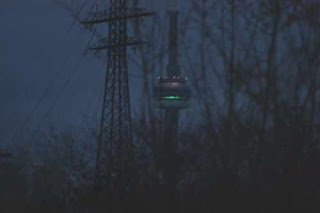Location: Rockton, Ontario, Canada
Address: 1049 Kirkwall Road
Date: May 2019
Website: westfieldheritage.ca
In October 1960 two Brantford area high school teachers started Westfield Village in order to educate children and adults on how life was lived in 19th century Ontario. They started the process of moving heritage buildings to a thirty acre property that they had purchased. Today that property has over 40 buildings and is known as Westfield Heritage Museum. During Doors Open Hamilton we visted the museum and learned a thing or two about how life used to be.
We started our tour in the area representing the years 1775 up to 1825. The first houses we came across were Hill House (pictured above on the right) and Westbrook House (white house in distance). Hill House was built in 1911 on the Six Nations Reserve in Brantford but was built in a similar style to homes built in the early 1800s. Westbrook House came from Brant County and was a much fancier home. It originally overlooked the "Battle of Malcolm's Mills" in 1814 which was the last land battle on Canadian soil.
Across the road from Hill House stood a log chapel. This was built in 1814 and is believed to be the oldest log chapel in all of Ontario.
Two other buildings in this area are the Queen's Rangers' cabin built in 1792 and the Bamberger House (the one with four windows on the left) built in 1810. Bamberger House was the oldest home in Hamilton before being moved to Westfield. The Queen's Ranger's cabin is one of the oldest log cabins in Ontario. If you want old homes made of logs, then Westfield is your place.
The most interesting building in this section of Westfield was the 19th Century Trading Post. As we walked by, the man out front said "Before you head into the future let me tell you a few things about life in the early 1800s." We followed him into the building.
Now some of what the man told us is true and some of it is just tall tales. All of it was entertaining. First he explained different levels of poor. The expression "dirt poor" is someone who could not afford to have wooden floors put in their house so the ground level was just dirt. The building we were in had wooden floors. He also stated that horses were also kept on the ground floor so they would stand in the dirt and the family would live upstairs. The expression "mad as a hatter" came from the hat makers who used mercury to make hats out of animal skins like beavers. The hatmaker and sometimes the frequent hat wearer would suffer from mercury posioning and often become delirious and live a shortened life from prolonged exposure. A beaver hat in the early 1800s could cost up to $500 dollars. Only the very well-to-do could afford such a luxury. A building such as the trading post itself would cost only $100 dollars. Madness!
Another level of poor is "piss poor". In order to tan the hides of animals, urine was used in the process. A very poor family could fill a bucket and take it to the Trading Post in exchange for some money. Unfortunately, some people didn't even have a pot to piss in. The man also went on to explain the origin of a threshold in the home and "throwing the baby out with the bath water".
We left the Trading Post and headed deeper into the Westfield Heritage Village. We were headed towards the 1900s. All the tales we had just heard are passed on through the years much like the information about the old homes at Westfield. Thankfully someone is around to preserve them.
Map of Our World
 Westfield Heritage Museum
Westfield Heritage MuseumPost # 250



















